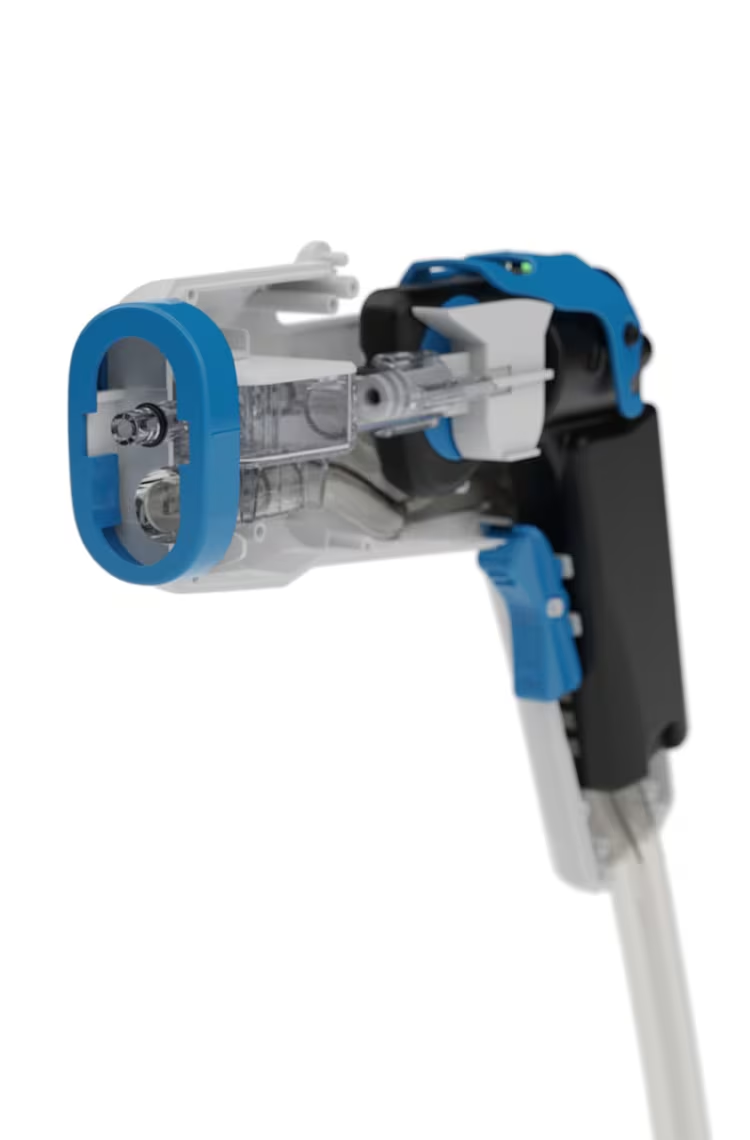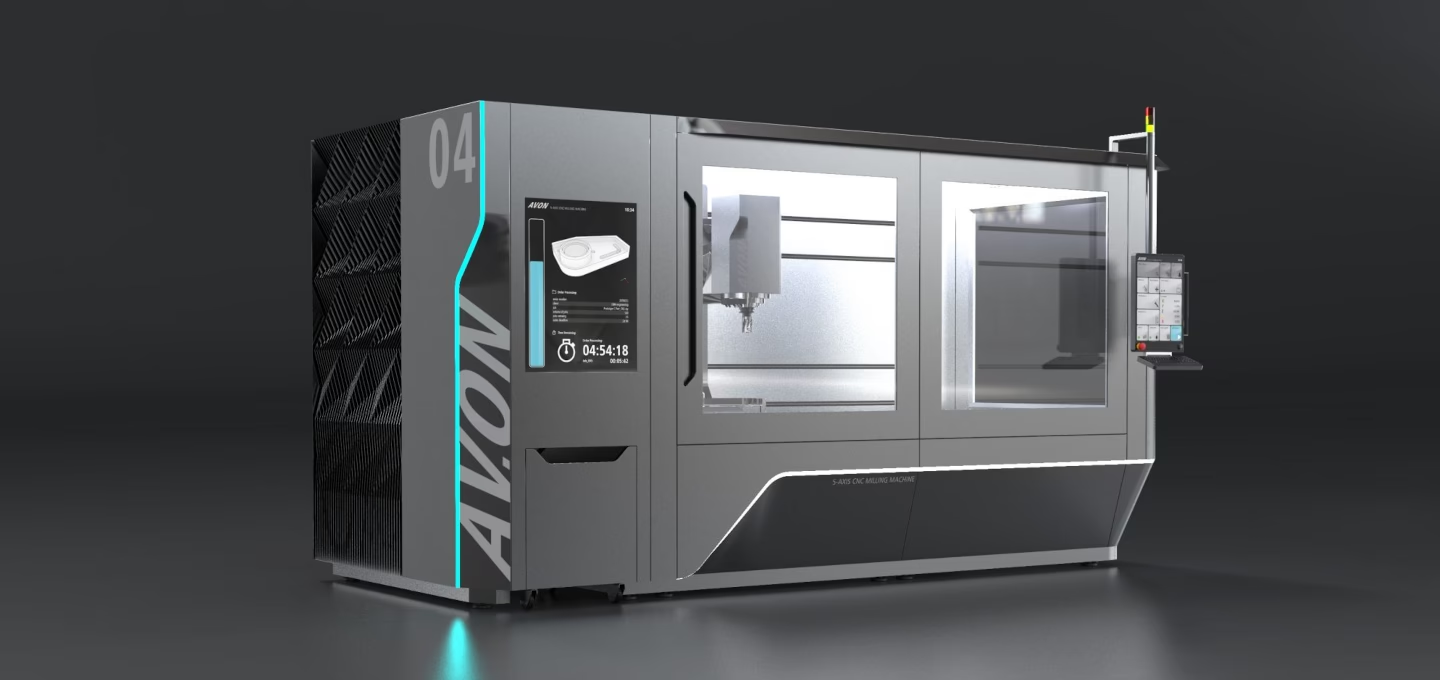Resource-Efficient Design: Strategies and Methods for Practice
How can resource consumption be concretely reduced in product development? Which design methods lead to measurable savings? And how can the balance between ecological goals and technical requirements be achieved? Resource-efficient design is more than a buzzword – it is a systematic approach that requires concrete tools, proven methods, and well-thought-out strategies.
This article examines the technical and methodological aspects of resource-efficient design. We show how life cycle analyses reveal optimization potential, which construction methods save material, and how Design for X approaches systematically improve resource efficiency. The BlueLavage case study demonstrates how these methods can be successfully implemented in a highly regulated environment.
Life Cycle Assessment: The Data Foundation for Resource-Efficient Design
Resource-efficient design does not begin with intuition but with data. Life Cycle Assessment (LCA) is the central tool for capturing and evaluating the actual resource consumption and environmental impacts of a product.
Systematic Recording of All Product Phases
An LCA examines the entire life cycle from raw material extraction through production, transport, and use to disposal or recycling. For each phase, material input, energy consumption, emissions, and other environmental impacts are quantified.
This analysis often reveals surprising weaknesses. For electronic devices, the greatest impact frequently lies in the usage phase through electricity consumption. For packaging, material production dominates. For vehicles, weight determines fuel consumption during use. Resource-efficient design can only address where analysis identifies the greatest leverage points.
From Analysis to Design Decision
LCA results flow directly into design decisions. When the usage phase dominates, resource-efficient design focuses on energy efficiency and durability. When production dominates, material reduction and optimized manufacturing processes take priority.
Modern LCA software enables variant comparisons even in early development phases. Designers can evaluate different material options, construction principles, or manufacturing processes regarding their environmental impacts and choose the most resource-efficient solution.
Design for X: Systematic Methods for Resource Efficiency
Resource-efficient design uses systematic Design for X approaches, where X stands for various optimization goals. These methodological frameworks structure the design process and ensure that resource efficiency is achieved deliberately rather than randomly. The most important approaches include:
- Design for Manufacturing (DfM): Optimization for efficient, resource-conserving production
- Design for Assembly (DfA): Reduction of component count and simplification of assembly
- Design for Disassembly (DfD): Construction for easy disassembly and reuse
- Design for Recycling (DfR): Material selection and design for optimal recyclability
Design for Manufacturing – Production-Appropriate Construction
Design for Manufacturing (DfM) optimizes products for efficient production. Resource-efficient design according to DfM principles minimizes manufacturing steps, avoids complex machining, and uses standardized processes.
Concretely, this means: Geometries are designed so they can be manufactured with few tool changes. Tolerances are only narrowly defined where functionally necessary. Material waste is minimized through optimized cutting configurations. The choice of manufacturing process considers not only unit costs but also energy and resource consumption.
Design for Assembly – Assembly Optimization
Design for Assembly (DfA) reduces the number of components and simplifies assembly processes. Fewer parts mean less material, fewer manufacturing steps, less inventory, and faster assembly.
Resource-efficient design according to DfA principles integrates multiple functions into one component, uses self-centering joints, and avoids complex assembly sequences. Clip connections replace screws, integrated hinges eliminate separate hinge components.
Design for Disassembly – Disassembly-Oriented Construction
Design for Disassembly (DfD) is crucial for circular economy and resource-efficient design. Products must be constructed so they can be easily disassembled at end-of-life – for repairs, refurbishment, or pure-grade recycling.
DfD-compliant constructions use reversible connections instead of permanent joints. Screws instead of gluing, clips instead of welding. Different materials are clearly separable. Components are accessible without destroying other parts. Materials are identifiable through labeling or standardized symbols.
Design for Recycling – Recycling-Appropriate Design
Design for Recycling (DfR) goes beyond disassemblability. Resource-efficient design selects materials that can be efficiently recycled and avoids problematic material combinations.
Composites are difficult to recycle – mono-materials preferred. Colored plastics limit recycling quality – natural-colored base materials enable higher-value reuse. Additives and coatings can disrupt recycling processes – resource-efficient design minimizes such contaminants.
Construction Methods for Material Reduction
Resource-efficient design uses modern construction methods to strategically place material where it is structurally needed – and save it everywhere else.
Topology Optimization – Mathematics Meets Design
Topology optimization is a computer-aided method that calculates optimal material distribution for given loads. The result is often organically shaped structures with maximum strength at minimum weight.
Resource-efficient design through topology optimization can achieve weight savings of 30-70 percent without compromising functionality or safety. The method is particularly suitable for highly stressed components in automotive, aerospace, and mechanical engineering.
Bionic Construction Principles
Nature has developed resource-efficient structures over millions of years. Bionic design transfers these principles to technical products. Bone structures inspire lightweight components, honeycomb structures optimize stiffness with minimal mass.
Resource-efficient design uses bionic principles such as growth laws (material grows where stress occurs), lightweight construction through hollow structures, and hierarchy (optimized structures at different size scales).
Rib Structures and Reinforcements
Instead of solid wall thicknesses, resource-efficient design uses targeted rib structures. These increase stiffness without proportional mass increase. The art lies in optimal placement and dimensioning of ribs.
Modern simulation tools show where reinforcements have the greatest effect. Resource-efficient design thus finds the optimum between stiffness, weight, and manufacturability.
Material Strategies in Resource-Efficient Design
Material selection is one of the most effective levers for resource efficiency. However, there is no universal "best" solution – context decides.
High-Strength Materials – Less is More
High-strength steels, aluminum, or magnesium alloys enable thinner wall thicknesses with equal strength. This directly saves material. The higher material price is often compensated by weight savings and reduced volume.
Resource-efficient design evaluates not only material costs but the overall balance: A more expensive, lighter material can be economically superior through reduced transport costs, lower energy consumption in use, and better recyclability.
Bio-Based and Recycled Materials
Bioplastics from renewable resources, natural fibers, or recycled plastics reduce dependence on fossil resources. However, resource-efficient design critically examines: Not every bio-based material is automatically more sustainable.
The LCA must include cultivation, processing, transport routes, and end-of-life. Recycled materials bring their own challenges: fluctuating quality, possible contaminations, limited availability. Resource-efficient design develops strategies for meaningful use of these materials.
Material Substitution – The Replacement Makes the Difference
Often, resource-intensive materials can be replaced by more efficient alternatives. Metal parts by high-strength plastics, solid material by foam structures, multi-layer laminates by optimized mono-materials.
Resource-efficient design systematically examines substitution possibilities. Functional analyses clarify which properties are really necessary. Often materials are used "over-engineered" – resource-efficient design dimensions appropriately.
Manufacturing Technologies for Resource Efficiency
The manufacturing process significantly influences resource consumption. Resource-efficient design selects processes that optimally use material and energy.
Additive Manufacturing – Only Material Where Needed
3D printing and other additive processes build up material only where needed. Unlike subtractive processes (milling, turning) that remove material, hardly any waste is created.
Resource-efficient design uses additive manufacturing especially for complex, topology-optimized geometries that would be conventionally impossible to produce. The technology is currently suited primarily for small series and prototypes but is increasingly reaching series production.
Forming Processes vs. Machining
Forming processes like forging, deep drawing, or extrusion plastically shape material – without removal. Material utilization often exceeds 90 percent. Machining processes, by contrast, produce chips as waste.
Resource-efficient design prefers forming processes where possible. However, these have their own limitations: higher tooling costs, restricted geometric freedom, minimum quantities. The overall balance decides.
Hybrid Manufacturing Strategies
Intelligent resource-efficient design optimally combines different processes. A basic body is cast or formed, critical areas are machined. This combines the material efficiency of forming with the precision of machining.
These hybrid strategies require thoughtful construction considering both processes. Resource-efficient design plans semi-finished products and post-processing steps already in the design phase.
Case Study: BlueLavage – Resource Efficiency in Medical Technology
The BlueLavage suction and irrigation pistol demonstrates how resource-efficient design works even under extreme requirements. In medical technology, sustainability claims and hygiene regulations seem irreconcilably opposed.
The Technical Challenge
Surgical irrigation systems are subject to strictest sterility and safety requirements. Traditionally, such devices are designed as disposable products – every detail must be sterile, so everything is disposed of after single use. In Germany, this single product segment annually generates 334 tons of plastic waste, 2.6 million batteries, and 434,000 electric motors end up in waste.
Resource-efficient design faced the task: How can components be reused without compromising sterility?
The Methodological Approach
Our work with UTK Solutions began with thorough analysis: Which components actually contact the sterile area? Which parts cause the greatest resource consumption? The LCA identified motor and battery as critical components – high material and energy input in production, minimal usage duration.
The design strategy followed the Design for Disassembly approach: separation into a disposable contact unit (handpiece) and a reusable drive unit (DriveUnit). The challenge lay in the interface: It had to be absolutely reliable, intuitively operable, and hygienically safe.
The Constructive Implementation
Resource-efficient design developed a patented locking system enabling tool-free assembly and disassembly. The DriveUnit is inserted into the sterile handpiece through an ergonomic insertion funnel – without the possibility of contaminating the operator or sterile exterior.
The handpiece itself was optimized according to DfM principles for minimal manufacturing depth. Simple injection-molded parts, reduced component count, short cycle times. Since it is discarded, the design focuses on absolute cost efficiency – but without sacrificing necessary functionality and professional appearance.
The DriveUnit, however, was designed for 150 usage cycles. High-quality components, robust construction, replaceable wear parts. Resource-efficient design optimized here for longevity rather than initial costs.
Technical Details of Resource Savings
Material reduction is based on precise analysis: The handpiece contains only what is absolutely necessary for safe single use. Wall thicknesses are reduced to what is structurally required, reinforcing ribs replace solid cross-sections. The form design enables efficient demolding and minimizes rejects.
The DriveUnit uses highly integrated electronics and efficient drive technology. Eliminating disposable batteries not only eliminates waste but also improves operational reliability – no performance fluctuations from weak batteries.
Measurable Results
The numbers prove the success of resource-efficient design: Compared to conventional systems, BlueLavage saves annually in Germany 53 tons of electronic waste, 164 tons of plastic, and 2.6 million batteries. This corresponds to a resource reduction of 48 percent while simultaneously lowering operating costs.
The system is clinically tested, meets all regulatory requirements, and is successfully used in the market. Resource-efficient design has proven here: Sustainability and highest technical requirements are not a contradiction.
Digital Tools for Resource-Efficient Design
Modern software supports resource-efficient design in all phases. Simulation tools, optimization algorithms, and LCA programs enable data-based decisions. The most important digital tools are:
- Finite Element Analysis (FEM): Simulation of mechanical loads for targeted material optimization
- Topology Optimization Software: Automatic calculation of optimal material distribution
- LCA Tools: Quantification of environmental impacts over the entire product life cycle
- Parametric CAD Systems: Rapid variant formation and systematic optimization
- Computational Fluid Dynamics (CFD): Analysis of energy efficiency and thermal behavior
Finite Element Analysis for Material Optimization
FEM simulations show precisely where material is loaded and where it does not contribute structurally. Resource-efficient design uses these insights for targeted material reduction in non-critical areas.
Iterative simulation enables variant comparisons: How does wall thickness reduction affect strength? Where are additional reinforcements sensible? Which material substitution is possible without loss of function?
Parametric Design for Variant Optimization
Parametric CAD systems enable quick adjustments and optimizations. Resource-efficient design can thus compare different configurations regarding material consumption, manufacturability, and performance.
Automated optimization runs systematically vary parameters and identify resource-efficient solutions that manual iteration would never find.
Conclusion: Resource-Efficient Design as a Methodological Discipline
Resource-efficient design is not a question of intuition or good intentions but systematic methodology. Life cycle assessments provide the data foundation, Design for X approaches structure the process, modern construction methods and manufacturing technologies concretely implement resource efficiency.
The key lies in early integration of these methods into the development process. Those who practice resource-efficient design only at the end as "optimization" forfeit the greatest potential. The fundamental design decisions – material selection, construction principle, manufacturing process – are made in early phases.
At the same time, the BlueLavage example shows: Resource-efficient design works even under extreme requirements. Regulation, safety, and functionality are not insurmountable hurdles but framework conditions within which innovative solutions are possible.
The future of product development is resource-efficient – not for ideological reasons but because it is technically superior, economically advantageous, and increasingly mandatory by regulation.
Resource-Efficient Product Development in Practice
For almost 20 years, we have been developing products that systematically implement resource efficiency. We use state-of-the-art analysis methods, proven Design for X approaches, and innovative construction techniques to make your product development measurably more resource-conserving.
If you would like to learn how resource-efficient design can be concretely implemented in your project, we are happy to provide you with free consultation.










